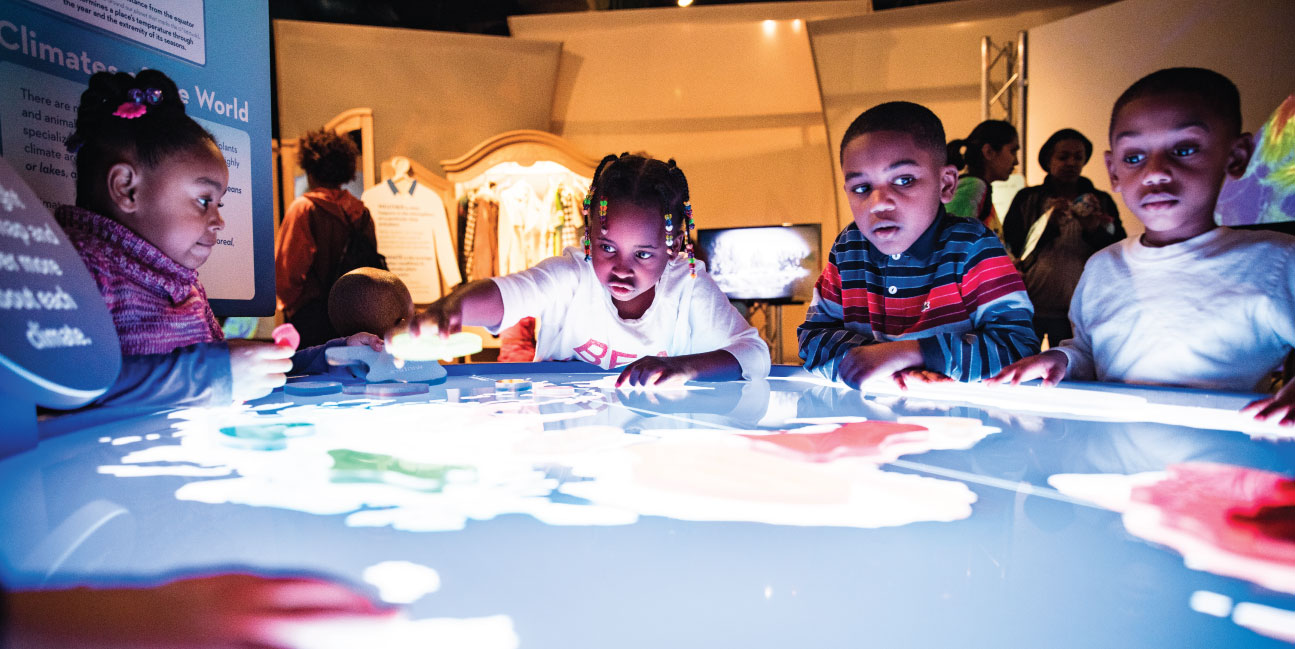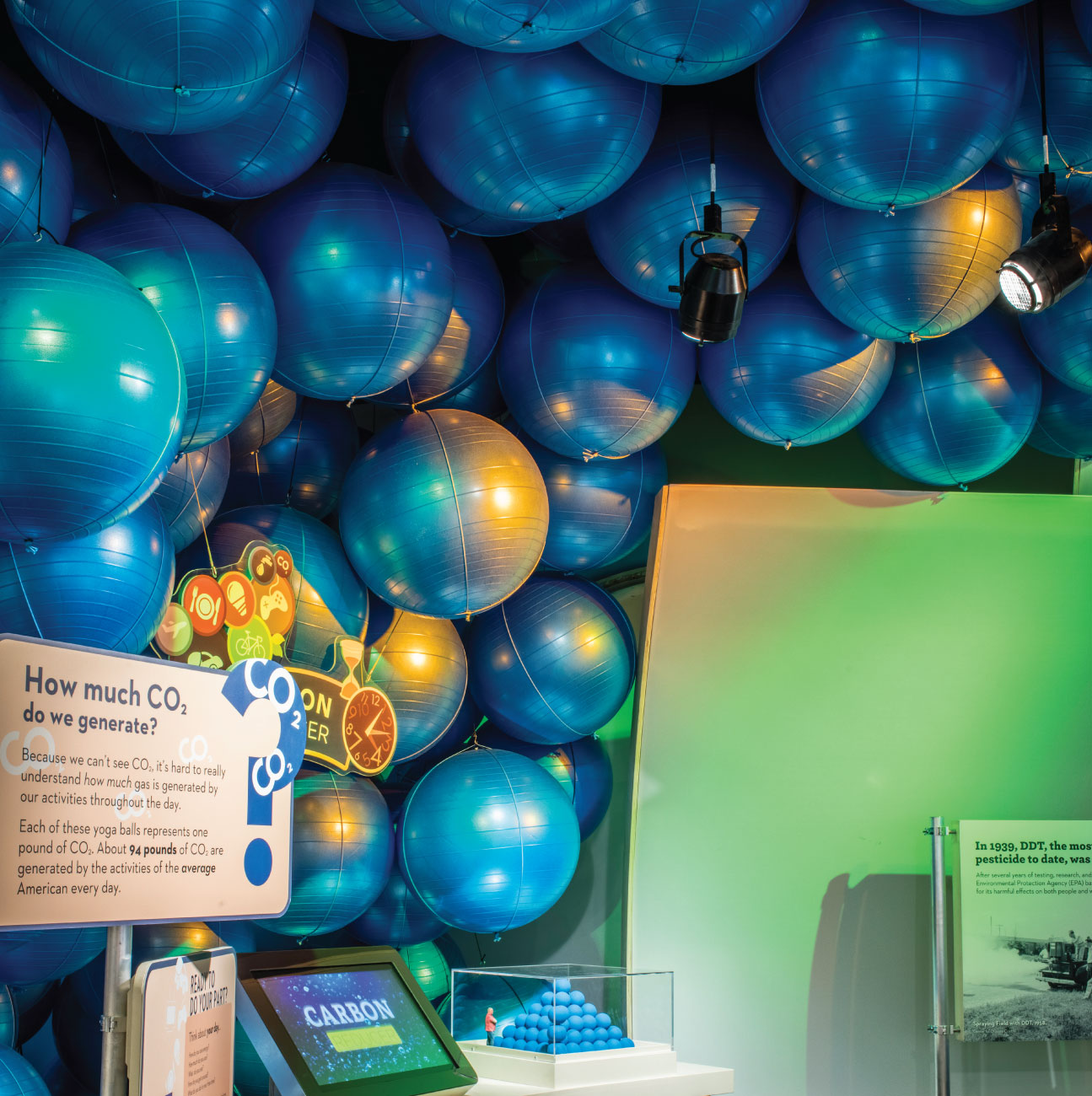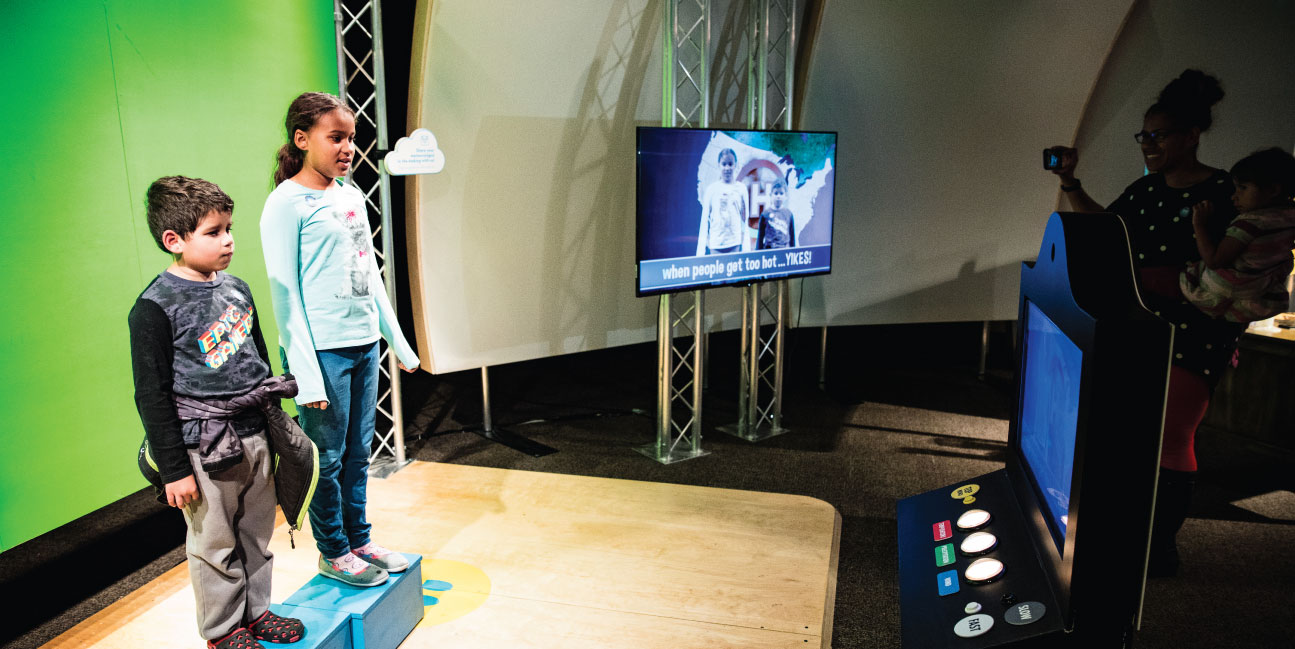
Weather to Climate: Our Changing World
February 2 - April 28
Glaciers are vanishing, temperatures are rising, and Earth’s global climate is getting wetter as it warms. What will the changing climate mean for people, plants, and animals? And what can we do to help slow climate change?
Weather to Climate: Our Changing World, developed by the Peggy Notebaert Nature Museum in Chicago, presents the fundamentals of weather and climate. With interactive and engaging content, the exhibition connects weather to the science behind global climate changes and how Earth’s various inhabitants will handle them.
Play a weatherperson.
Kids can become TV meteorologists using a green screen and video camera, with provided scripts and scenarios emphasizing the relationship between climate change and weather.
What makes weather?
Mix up a thunderstorm! Whip up a tornado! An interactive station lets visitors combine six main weather components to see how each contributes to various weather events, learning along the way about how jet streams affect precipitation and temperatures.
Reduce your carbon.
How much CO2 do you produce? A digital game helps visitors answer that question and find out to reduce their CO2 footprint.
Special Additions
Get a unique perspective on climate change from featured University of Minnesota researchers and an installation courtesy of Bell Museum showcase artist Sarita Zaleha.
Will Climate Change, Change the Nature of Our National Parks?
National Parks safeguard the natural beauty of wilderness areas across the country, but climate change respects no borders — and it’s already having an impact on the northern boreal forests and Voyageurs National Park. Learn how researchers Lee Frelich and Ryan Toot from the University of Minnesota’s Center for Forest Ecology are using climate models and field research to predict dramatic changes in the Great Lakes region.
Will Minnesota’s Forests Survive Climate Change?
Trees grow slowly. If we do nothing to reduce climate change, seedlings today may face a radically different climate when they reach maturity in 50 to 100 years. A University of Minnesota research project, B4Warmed, is testing how our northern forest will fare in the future. In test plots in the north woods, researchers planted a variety of tree seedlings and used heat lamps and warming coils to simulate climate change in plots 10 feet in diameter.
Artist Showcase: Collapse/Clap
The calving — or breaking off — of huge chunks of glacial ice is a truly awesome event, and ecotourists from all over the world flock to Alaska, Norway, and other frozen landscapes to witness the raw power of this natural phenomenon. But Earth’s warming climate is rapidly accelerating the rate of glacial calving. Bell Museum showcase artist Sarita Zaleha’s installation, COLLAPSE/CLAP, celebrates this breathtaking spectacle and insists the viewer not look away as the Earth gives up its glaciers for generations, perhaps even millennia, to come.
Weather To Climate: Our Changing World was created by the Chicago Academy of Sciences and its Peggy Notebaert Nature Museum, and is toured internationally by Flying Fish.




